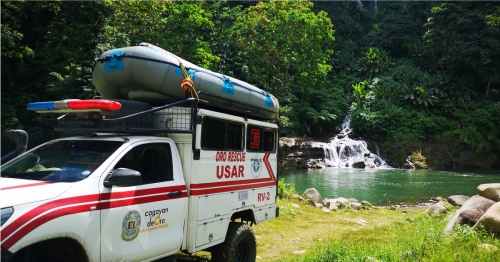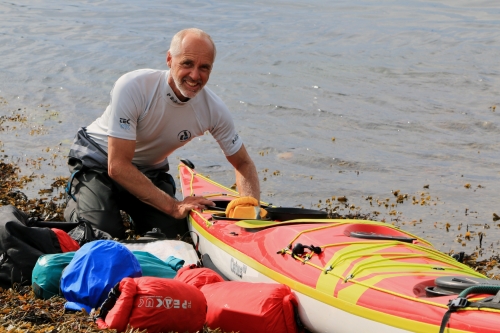
Welcoming our spring visitors
Every year spring marks the time of year we see a welcome return to some of our favourite sea birds. Many of them returning after travelling immense distances or spending a winter out at sea. To see them returning to their favourite nesting grounds and experience their sights, sounds and smells is a unique opportunity that sea kayakers are lucky enough to enjoy. Paddling near nesting areas with these amazing birds filling the sky above and seas around, their noise deafening and their smell intoxicating is quite simply breath-taking. It is a time of year where these busy birds never stop to rest, doing all they can in this brief window of time to hopefully raise some chicks before heading away again to see or distant lands. It is this breeding period that they put on their best show for us as well; their colours pristine and their antics spectacular. We all have our favourites we can’t wait to see again, here’s three of mine for you to look out for when next out:

Gannets on Bass Rock
Gannets
Gannets arrive at their colonies from January onwards and leave between August and September, however it is the spring and early summer you will enjoy them at their most active. They are the flying masters of the sea bird world, effortlessly gliding on their 180cm wingspan no matter what the conditions. It is their spectacular feeding method of diving for fish from up to 30m above the sea’s surface they are best known and remembered for. They gather amazing speed with their wings folded back as they dive towards their prey. As they hit the water, split-second timing prevents wings being snapped and a strengthened skull along with air sacks protects the bird’s brain from concussion. They can reach speeds of up to 100 km/h as they dive and strike the water, this enables them to catch fish much deeper than most airborne birds hunting for fish.

Gannet at Noup Head
Instantly recognisable from afar, the adult gannets have dazzling white plumage with black wing tips and creamy yellow head. The juveniles are mostly grey-brown, becoming increasingly white in the five years it takes to reach maturity. Gannet pairs may well remain together for all their lives, however the pairs separate when the chicks leave the nest, bonding back together again the following year.In the Hebrides the locals sail to a tiny island called Sula Sgeir (gannet skerry) 70km to the NNE of the Butt of Lewis each autumn. Here the harvest young gannets (guga), which are considered a delicacy in Lewis. This has been a tradition for many years and thus continues in a controlled way, the Faroe Islands doing similar.
Trips to enjoy seeing gannets:

Puffins at Fladda-chuain
Puffins
It’s hard not to fall in love with puffins, their comical nature is alluring to all and their breeding colourings stunning. Along the Scottish coastline we are lucky to have some of Britain’s main breeding colonies. Close up they are easily recognisable by their bright yellow, red and white striped beaks, and for this reason they are also sometimes called ‘sea parrots’. From a distance they can still be recognised by their very fast wing beats as they skim the sea’s surface. These birds spend their lives at sea, only coming to land between April and mid-August to breed. Living the rest of the time at sea in all conditions make them remarkably tough creatures. They are able to swim exceptionally well, feeding on fish and drinking sea water. When breeding they live in burrows, which are excavated in the soil, found on top of the coastal cliffs. Puffins choose partners for life and each year will incubate one egg, returning to the same burrow annually. After hatching, the young will spend about 45 days in the burrow before it heads out to sea to begin its life. It will spend two to three years at sea before returning to the same breeding area to start a family of its own.

Puffins 'eskimo kissing' on Treshnish Isles
When a puffin returns from a fishing trip they rub beaks and call to each other, similar to ‘eskimo kisses’. This is always a lovely sight to see if you are lucky enough. If enjoying seeing puffins in the Northern Isles then you will get to know the local name for them is Tammy Norris.
Trips to enjoy seeing puffins:

Arctic Tern on Isle of May
Arctic Terns
The arctic tern is a common visitor to the Scottish coastline from late April until August. The further north you travel the more it will be seen, however there are large colonies breeding on the Isle of May and other areas further south. This amazing bird spends it time flying between it’s nesting grounds in the northern hemisphere as far up as the Arctic all the way down to the southern hemisphere including the Antarctic regions. It has by far the longest regular migration of any animal, which ensures it sees two summers per year and therefore more daylight than any other animal on the planet. The arctic tern is very similar to the common tern, which is found more regularly further south in the UK. The key differences are the pure red bill of the arctic compared to the common that has a black tip; the arctic has a longer tail that extends well beyond the wing and when seen overhead the arctic terns wings look semi-transparent compared to the common’s.
When enjoying seeing the arctic terns, beware as they are very territorial and will not be afraid to aggressively dive bomb you!
Trips to enjoy seeing arctic terns:

Arctic tern at Copinsay
Being ‘bird aware’
Whilst out on the sea enjoying any birdlife, particularly in nesting season, please consider the following:
- Stay well away from cliffs where birds are nesting
- Avoid disturbing birds from their nests (when entering caves etc)
- Give space when birds are floating at sea
- When observing the birds do not linger too long
- When paddling past move by quietly and steadily so as not to panic the birds
- Many birds (arctic tern & puffin) nest on beaches/cliff tops. Take extreme care if walking around in these areas.

Puffin on Lunga, Treshnish Isles
For a wealth of information on sea kayaking in Scotland check out Doug and Lara's website: https://scottishseakayaking.co.uk.










